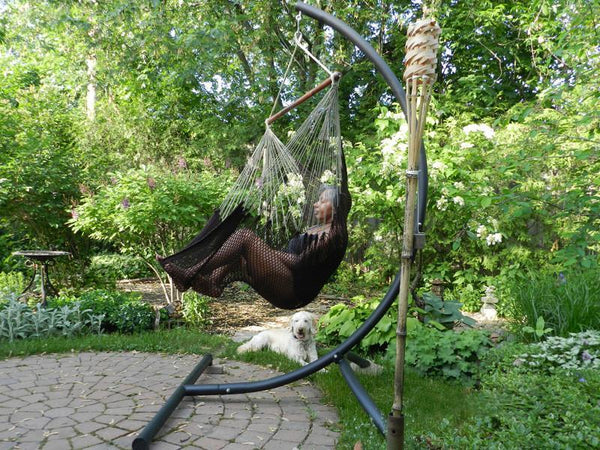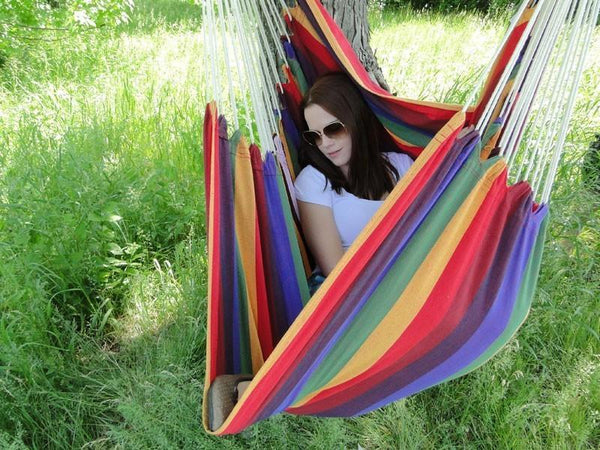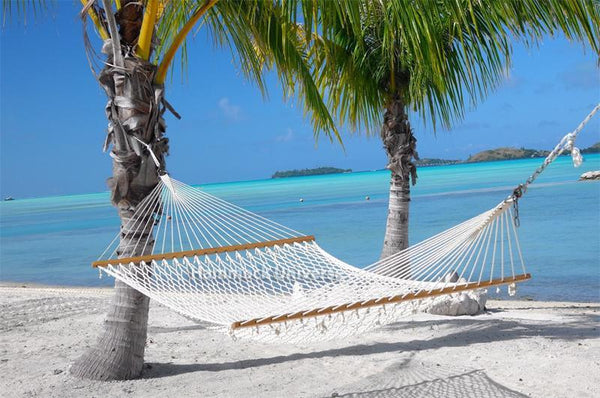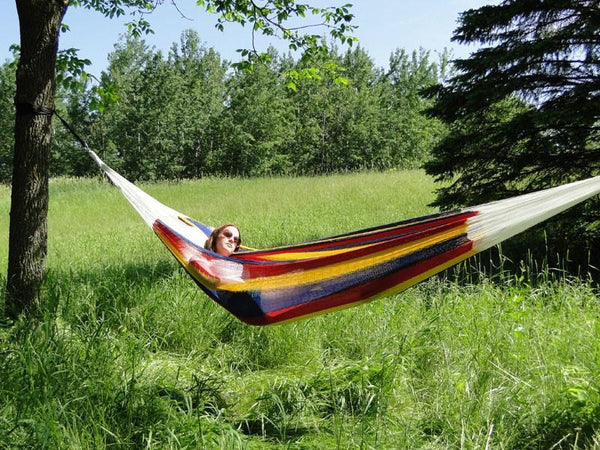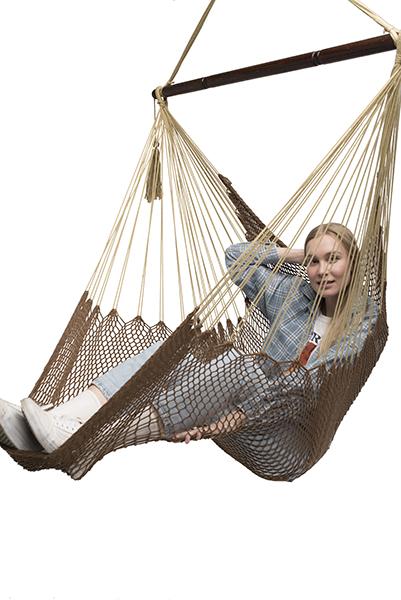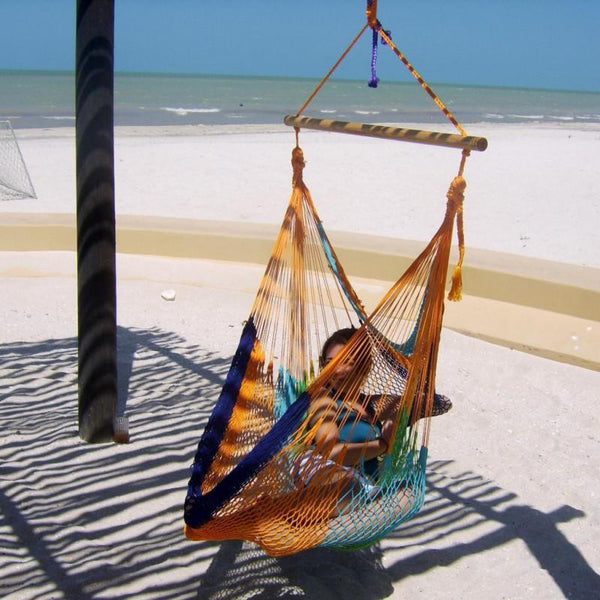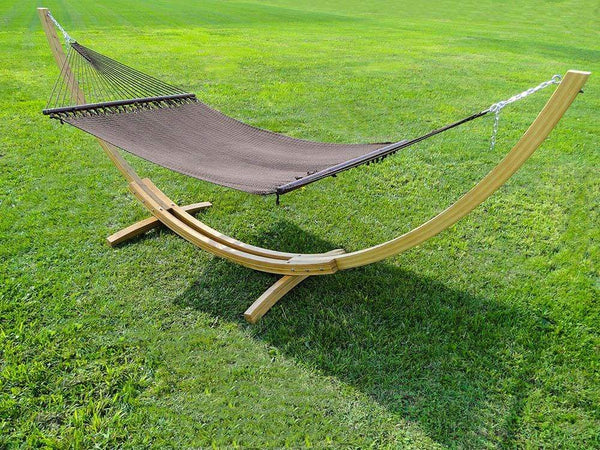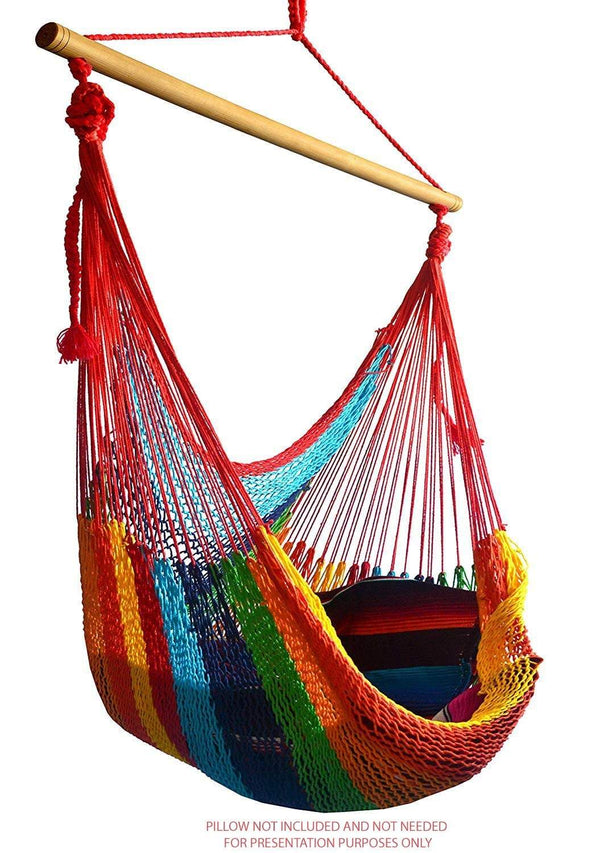FREE SHIPPING on most orders $25+ HAMMOCK BUYING GUIDE
Menu
-
-
Hammocks
-
Hammock Stands
-
Hammocks with Stands
-
Hanging Hammock Chairs
- View all Hammock Chairs
- Brazilian Style Hammock Chairs
- Colombian Hammock Chairs
- Mayan Hammock Chairs
- Mayan Hammock Chairs Deluxe
- Universal Hammock Chair Stand
- U Hammock Chair Stand
- Brazilian Hammock Chair with Universal Chair Stand
- Colombian Hammock Chair with Universal Chair Stand
- Mayan Hammock Chair with Universal Chair Stand
- Mayan Hammock Chair Deluxe with Universal Stand
-
Accessories
- Gift Cards
- Tools and Guides
- Bargain Bin
-
- 1-800-207-4761
- Login

FREE SHIPPING on most orders $25+ HAMMOCK BUYING GUIDE
The Evolution of Outdoor Furniture: From Chairs to Hammocks
October 04, 2024 7 min read
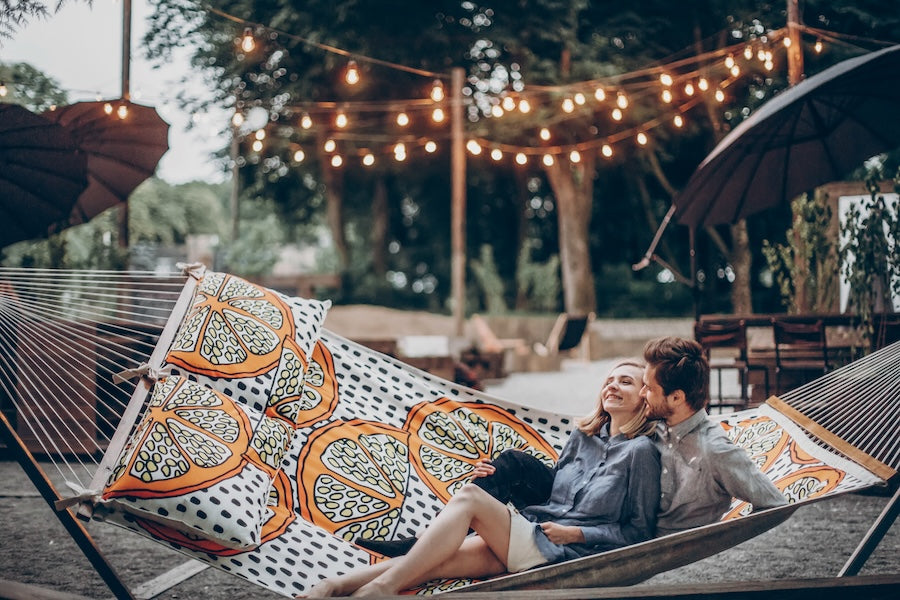
Audio Version
Outdoor spaces have always been a place to unwind, but the way we use and furnish them has sure changed a lot over the years. From simple, functional seating to the stylish and comfortable setups we see today, outdoor furniture has come a long way.
Long gone are the days when a wooden bench or a couple of folding chairs were all you needed for a backyard gathering. Now, it’s all about creating your perfect space for relaxation and enjoying the outdoors.
You’ve probably noticed that comfort has taken centre stage in outdoor furniture. People want more than just a place to sit - they want their outdoor space to feel like an extension of their home. Whether it’s plush loungers, deep-cushioned chairs, or hammocks that sway gently in the breeze, outdoor furniture is now all about relaxation. Style has also become more important, with many looking for furniture that enhances the beauty of their patios, decks, or gardens.
Join us as we explore the evolution of outdoor furniture and the journey a simple hammock went through - from a basic camping accessory to a stylish, eco-conscious staple for any backyard.
Early Beginnings: From Wooden Benches to Wicker Chairs
Outdoor furniture started with practicality in mind. The earliest forms were simple and functional, often made from wood or stone. Wooden benches were common, especially in gardens or public spaces, providing a sturdy place to sit. They were built to last but weren’t exactly designed for comfort.
Back then, the focus was more on utility than relaxation. The idea of lounging in your backyard wasn’t a priority - people were more concerned with having durable seating for social gatherings or work-related tasks.
Wicker furniture also made an early appearance, offering a lighter, more portable option. Made from woven plant materials like rattan, wicker chairs became popular for their intricate designs and flexibility. Though still basic by today’s standards, they marked the beginning of furniture that was not only functional but also decorative.
Wicker furniture was often found in wealthier households, adorning patios and gardens as a sign of both practicality and style. Yet, even with wicker’s elegant appearance, comfort wasn’t at the forefront of design during this period. Most pieces were rigid and didn’t offer much in terms of relaxation.
At this stage, outdoor furniture was more about having a designated place to sit rather than creating an inviting space to relax. The materials were limited, and the designs were straightforward, serving the basic needs of the time. The concept of an outdoor oasis was still far in the future.
The Birth of Outdoor Leisure: The Rise of Patio and Garden Furniture
The shift toward outdoor leisure really took off in the post-industrial era. With more free time and better living conditions, people started to see their backyards as extensions of their homes. This cultural shift led to a demand for more specialized outdoor furniture.
Patio sets became a thing, as people began hosting outdoor dinners, tea parties, and family gatherings. Metal and plastic started to replace wood as the primary materials for outdoor furniture, offering more durability and weather resistance.
This was when outdoor spaces became more about socializing and relaxing. People no longer viewed their backyards as purely functional spaces - they wanted comfort, style, and convenience. The rise of the middle class also meant more families were investing in outdoor furniture to create enjoyable, inviting spaces. Patio chairs, dining sets, and umbrellas began appearing in backyards everywhere, transforming them into places of leisure rather than just extra space.
Metal and plastic, though not as natural as wood or wicker, revolutionized outdoor furniture. These materials allowed for more intricate designs, better weatherproofing, and easier maintenance. Furniture became lighter and more portable, which meant you could rearrange your outdoor space without much effort.
This era saw the beginnings of outdoor furniture as we know it today - a place not just to sit, but to truly enjoy your time outside.
Comfort and Innovation: The Demand for More Relaxing Furniture
By the 20th century, the idea of outdoor spaces being purely functional was rapidly fading. People were spending more time outside, not just to socialize but to unwind and relax. This shift in how outdoor spaces were used led to a demand for furniture that was more than just practical.
Comfort became a top priority. Loungers, deep-seated chairs, and furniture with cushions started to make their way into patios, gardens, and balconies, creating cozy environments that mimicked the comfort of indoor living rooms.
The introduction of lightweight materials and weather-resistant fabrics changed everything. Outdoor furniture no longer had to be heavy, hard, or cumbersome. People wanted pieces that were not only comfortable but also easy to move and maintain.
Loungers became popular, offering a full recline for maximum relaxation. This was also the era when furniture designs became more versatile. Folding chairs and stackable tables allowed people to optimize their spaces without sacrificing comfort. Whether you were looking for a small chair for a balcony or a full set for a large patio, there were now options for everyone.
The emphasis on relaxation also sparked innovation in design. Multi-functional furniture pieces became the norm, with items like sunbeds that doubled as sofas or tables that could be easily expanded for more seating.
The focus was clear - outdoor furniture wasn’t just about sitting anymore. It was about creating a space where you could relax, unwind, and enjoy the outdoors for longer stretches of time. This shift set the stage for the rise of innovative outdoor relaxation products, like hammocks, which took comfort and leisure to the next level.
Read More: Hamock Decor Ideas
The Hammock: From Indigenous Roots to Modern Appeal
Hammocks have a rich history, originating in Central and South American cultures long before they made their way into mainstream outdoor spaces.
Originally crafted from materials like tree bark and plant fibres, hammocks were used by Indigenous people for sleeping and resting. They were simple yet effective, allowing people to sleep off the ground and avoid insects or animals. Over time, the hammock’s design remained largely unchanged, a testament to its practicality and comfort.
What makes the hammock unique is its ability to offer both comfort and simplicity.
Unlike chairs or loungers, hammocks cradle the body in a way that feels weightless, providing a sense of relaxation that’s hard to match. They’ve been a symbol of leisure for centuries, and their appeal only grew as people began to discover the joy of using them for more than just camping. The transition from a camping essential to a backyard staple was a natural evolution, as people sought new ways to bring comfort and style into their outdoor spaces.
Today, hammocks are more than just a functional item. They’ve become a key part of modern outdoor living, offering a unique blend of tradition and innovation.
You’ll find hammocks made from durable, weather-resistant fabrics, designed to last through changing seasons, with styles ranging from traditional rope hammocks to fabric designs that fit seamlessly into contemporary décor. Whether hung between trees or placed on a stand, the hammock has secured its place as a must-have item for anyone looking to elevate their outdoor relaxation game.
Hammocks vs Traditional Outdoor Furniture: Why They’re Winning
When you think about outdoor furniture today, comfort is always a top priority. Hammocks have a clear advantage in this area over more traditional pieces like chairs, benches, or loungers.
A hammock provides a unique kind of comfort. It cradles your body, reducing pressure points and allowing you to feel weightless. It’s the kind of relaxation you simply don’t get from a standard outdoor chair. The design of a hammock naturally encourages relaxation, giving you that perfect excuse to stretch out and fully unwind.
Portability is another win for hammocks. Unlike most outdoor furniture, which can be heavy or bulky, a hammock is easy to pack up and move. You can take it camping, to the beach, or simply relocate it around your yard as the sun moves. Whether you use a stand or hang it between two trees, it’s far more versatile than traditional patio sets. You can set up a hammock almost anywhere, making it an adaptable option for any outdoor space.
There’s also the growing trend of incorporating wellness into outdoor spaces, and hammocks fit perfectly into this mindset. More people are seeking tranquillity and stress relief in their backyards, and hammocks offer an escape from the day’s hustle.
Whether it’s reading, napping, or just swaying in the breeze, hammocks provide a calm, peaceful experience that traditional furniture can’t match. This has made them increasingly popular with those who prioritize self-care and mental well-being.
The Modern Hammock: Innovation Meets Tradition
Modern hammocks have come a long way from their traditional roots. While the essence of the hammock remains the same - comfort, simplicity, and a suspended design - today’s hammocks are a blend of craftsmanship and innovation.
Handmade hammocks, crafted by skilled artisans from “hammock countries” around the world, are still highly sought after. These hammocks carry with them a rich history, but modern designs and materials have elevated them to fit into contemporary outdoor spaces. The durability and longevity of these products are better than ever, thanks to advancements in weather-resistant fabrics and sturdy hardware.
Today, there’s a hammock for every kind of outdoor space. Whether you’re looking for something minimalistic and sleek or a large, family-sized hammock that can support multiple people, the options are endless. Hammock Universe, for example, offers a wide range of styles, from traditional rope hammocks to chic fabric designs. Some come with stands for easy setup, while others offer vibrant colours and patterns to complement any outdoor décor. These innovations have made it easier than ever to incorporate hammocks into modern spaces without sacrificing style.
One of the biggest shifts in hammock design is their adaptability. Hammock chairs are now a popular choice for those with limited space, offering the same relaxing experience in a more vertical form. These hanging chairs fit well in patios, small balconies, or even indoor spaces. They’re perfect for anyone who wants the comfort of a hammock but in a more compact, versatile form.
Whether you’re a solo lounger or looking for a space for the whole family to relax, modern hammocks offer the best of both worlds: timeless comfort with a modern twist.
Conclusion: The Future of Outdoor Relaxation
Outdoor furniture has come a long way, and its future looks even more exciting. The demand for comfort, style, and sustainability is only growing, and we’re seeing that reflected in modern designs. People are now looking for pieces that not only look good but also contribute to their well-being. Hammocks are a perfect example of this shift. They offer that blend of relaxation and simplicity, making them an essential part of outdoor living.
As we look ahead, it’s clear that sustainability will play a major role. More eco-friendly materials and durable, weather-resistant fabrics are becoming the standard. People want furniture that lasts and aligns with their environmental values.
Hammocks, with their minimalistic design and use of natural materials, are leading this movement.
Read More: How To Transfor A Small Ooutdoor Living Space
Safety First!
When using a hammock*, safety is paramount. Please make sure to follow these important guidelines when purchasing, installing and using a hammock
*(includes Hammock, Hammock Chair, Hammock Stand and Hammock Accessories)
Safety First!
When using a hammock*, safety is paramount. Please make sure to follow these important guidelines when purchasing, installing and using a hammock
*(includes Hammock, Hammock Chair, Hammock Stand and Hammock Accessories)
Related Products
Want to relax?
Join for exclusive content and promotions we only give to our email list!
